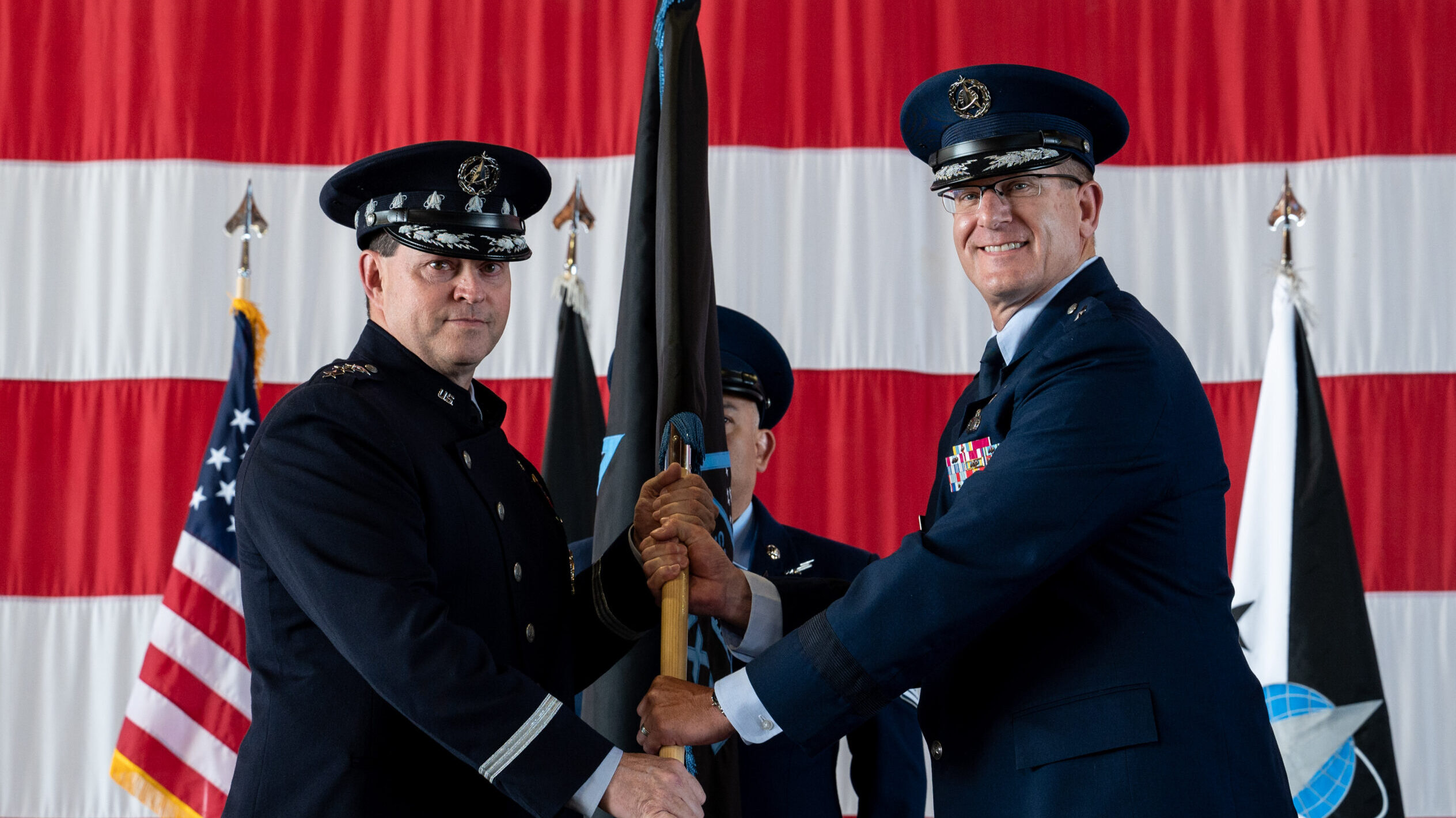
US Space Force Brig. Gen. Timothy Sejba, Space Training and Readiness Command (STARCOM) incoming commander (right) accepts the unit guidon from Chief of Space Operations Gen. Chance Saltzman during STARCOM’s change of command ceremony at Peterson Space Force Base, Colorado, July 20, 2023. Sejba assumed command from Air Force Maj. Gen. Shawn Bratton. (US Space Force photo by Ethan Johnson)
WASHINGTON — The Space Force’s first “orbital warfare” exercise, called Red Skies, has been delayed from this summer towards the end of the year, according to Space Training and Readiness Command (STARCOM).
“We anticipate that the inaugural execution of the Red Skies exercise will be near the conclusion of this year. Prior to this, the team will be extensively building out and refining various aspects of the exercise during the latter part of the summer,” a STARCOM spokesperson told Breaking Defense.
Red Skies is one of three annual Space Force training series planned by STARCOM, and is focused on getting Guardians working under Space Operations Command (SpOC) ready to respond to any attacks on US satellite systems. SpOC is the Space Force’s primary field command, and its linchpin unit for undertaking orbital warfare is Delta 9. The Delta’s website defines that mission as “protect and defend operations and providing national decision authorities with response options to deter and, when necessary, defeat orbital threats.”
STARCOM just last week held its first change of command ceremony, with Space Force Brig. Gen. Timothy Sejba taking over from Air Force Maj. Gen. Shawn Bratton — the latter having assumed the role as STARCOM’s first commander in February 2021. Speaking with reporters following the June 20 ceremony, Sejba said his team is continuing to work on fleshing out a “vision” for Guardian education and training.
“That document is still kind of in the works,” he said.
One of the key issues facing STARCOM is the question of whether, and if so how, Guardians can undertake “live” training that involves operating actual satellites on-orbit — rather than simply relying on simulation. The decision is complicated because under international law no nation can stake a claim over a region of space, with the 1967 Outer Space Treaty prohibiting claims of national sovereignty in outer space or on a celestial body such as the Moon. Thus, it simply isn’t possible for the Space Force to set up a testing and training range, such as those the Air Force uses in remote areas in the western US, where live wargames could take place.
The first Red Skies, the STARCOM spokesperson confirmed, will not include any live training.
“The primary objectives for this inaugural run are to focus on mission planning and execution using orbital warfare modeling and simulation techniques. In the future, Red Skies may expand to include orbital warfare range capabilities through representative systems. The approach taken, be it simulation or live-fire, will be contingent upon the specific training requirements of our Guardians,” the spokesperson said.
“The 392d Combat Training Squadron will thoughtfully construct and adjust the exercise to fulfill the demands of our Guardians. Depending on the needs of the participants, we may incorporate aggressor or range support. So, while the first exercise has not yet happened, we anticipate valuable insights from this endeavor and the opportunity to refine our methods for subsequent training exercises.”
L3Harris selloffs hampered by low bids, CEO says
“To the extent we can get a good price for what we’ve identified as non-core [businesses], we’ll do it. But too many of the offers are coming in low and people think we’re desperate to sell, and I can assure you we’re not,” said L3Harris CEO Chris Kubasik.



























